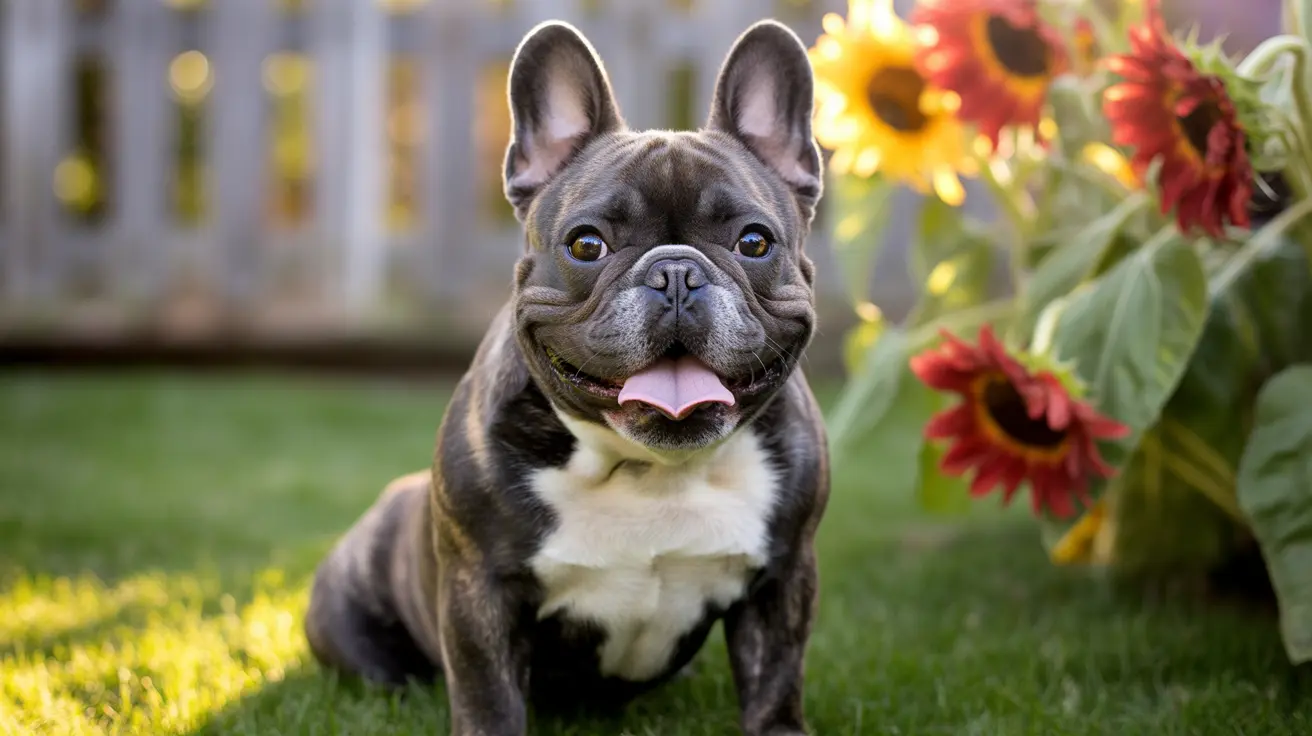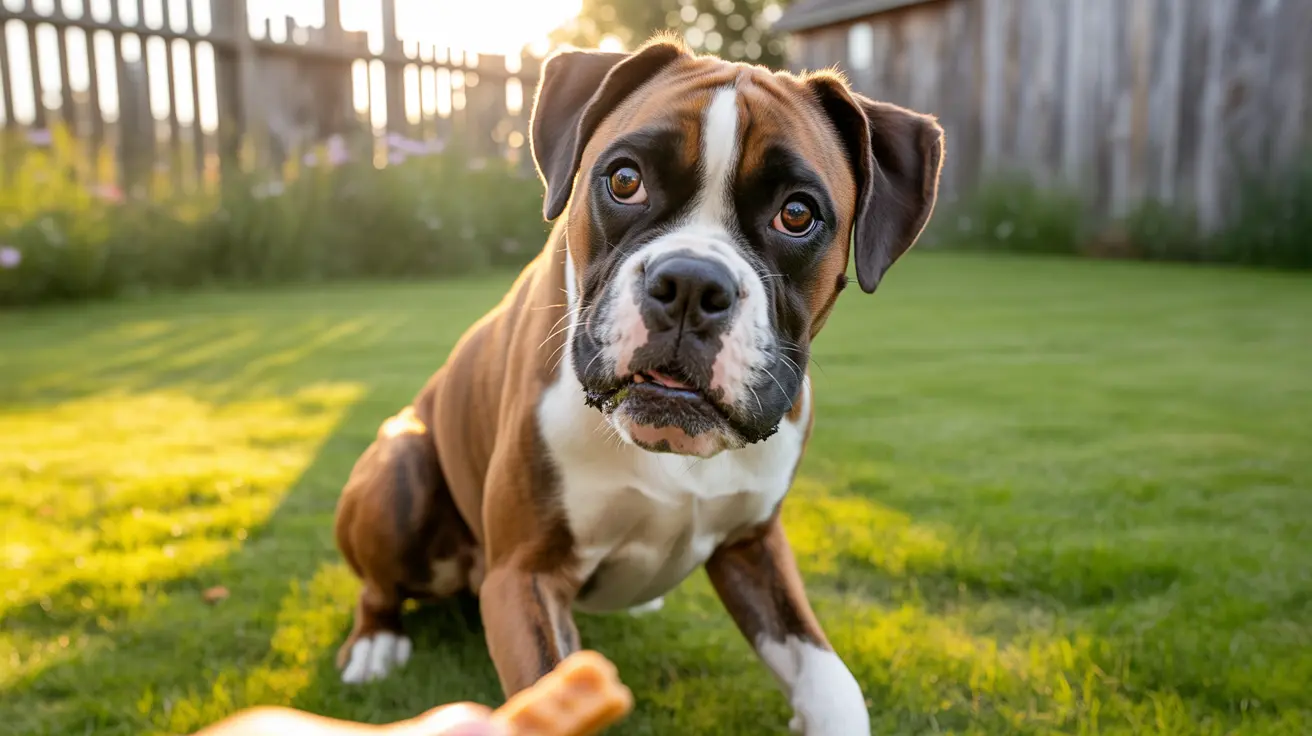Why Do Dogs Pant: Understanding Your Pet's Natural Cooling System and Warning Signs
Every dog owner has witnessed their furry companion panting after a vigorous play session or during a hot summer day. While panting is a completely natural behavior for dogs, understanding the various reasons behind this breathing pattern is crucial for maintaining your pet's health and well-being. Unlike humans, dogs have a limited ability to regulate their body temperature through sweating, making panting their primary cooling mechanism.
Recognizing the difference between normal panting and excessive panting that signals a potential health concern can be life-saving for your pet. From temperature regulation to emotional responses, panting serves multiple purposes in your dog's daily life. By learning to interpret these signals correctly, you'll be better equipped to provide appropriate care and know when to seek veterinary attention.
This comprehensive guide will explore the science behind why dogs pant, help you identify normal versus concerning panting patterns, and provide essential knowledge for keeping your canine companion safe and comfortable in various situations.
The Science Behind Why Dogs Pant
Dogs pant primarily because they cannot regulate their body temperature through sweating like humans do. While dogs do have a few sweat glands located in their paw pads, these are insufficient for effective cooling. Instead, panting serves as their primary thermoregulation mechanism through a process called evaporative cooling.
When dogs pant, they rapidly inhale and exhale air, which increases the evaporation of water from their nose, lungs, tongue, and mouth. This evaporation process helps dissipate heat and cool the body internally. The rapid air exchange also facilitates increased oxygen intake and carbon dioxide removal, supporting the dog's respiratory needs during periods of increased activity or stress.
Understanding this fundamental cooling mechanism helps explain why panting intensity typically correlates with air temperature and your dog's activity level. The hotter the environment or the more vigorous the exercise, the more your dog will need to pant to maintain a safe body temperature.
Normal Reasons Why Dogs Pant
Temperature Regulation and Exercise
The most common and natural reason dogs pant is to cool down after physical exertion or exposure to warm temperatures. During exercise, your dog's body generates additional heat that must be expelled to prevent overheating. Similarly, exposure to hot weather naturally increases your dog's cooling needs, making panting a normal and expected response.
A healthy dog's resting respiratory rate typically ranges from 15 to 35 breaths per minute. During normal panting episodes related to exercise or temperature, this rate may increase significantly but should return to baseline once your dog has cooled down and rested.
Excitement and Stimulation
Dogs often pant when they're excited or stimulated by various situations. This might occur during playtime, when greeting their favorite people, or in anticipation of enjoyable activities like walks or car rides. This type of panting is typically accompanied by positive body language such as tail wagging, alert ears, and bright, engaged eyes.
Stress and Anxiety
Emotional triggers such as fear, anxiety, or stress can also cause increased panting in dogs. Common stressful situations that may trigger panting include thunderstorms, fireworks, veterinary visits, car trips for anxious travelers, or encountering unfamiliar environments or people. This type of panting may be accompanied by other stress signals such as pacing, drooling, or seeking comfort from their owner.
How to Differentiate Between Normal and Excessive Panting
Recognizing when your dog's panting crosses from normal to concerning is essential for their health and safety. Normal panting should have an obvious trigger such as exercise, heat, or excitement, and should subside once the triggering factor is removed or reduced.
Excessive or abnormal panting occurs when dogs pant heavily without an obvious cause, especially in cool, calm environments. Key warning signs include panting that exceeds 40 breaths per minute at rest, heavy panting that doesn't subside after cooling down, or panting accompanied by distress signals.
Red Flag Symptoms Requiring Immediate Attention
Several symptoms accompanying excessive panting indicate the need for urgent veterinary care:
- Open-mouth breathing while at rest
- Pale, blue, or abnormal gum colors
- Reluctance to eat or drink
- Labored or difficult breathing
- Heavy drooling
- Lethargy or weakness
- Disorientation or collapse
- Sudden changes in panting patterns or sounds
These symptoms may indicate serious conditions such as heatstroke, heart problems, respiratory disorders, or other medical emergencies that require immediate professional intervention.
Medical Conditions That Cause Excessive Panting
Pain and Discomfort
Dogs experiencing pain or discomfort from injury, illness, or chronic conditions often exhibit increased panting as a stress response. This type of panting may be accompanied by other signs such as reluctance to move, changes in appetite, behavioral changes, or visible signs of discomfort when touched in certain areas.
Heart and Lung Problems
Cardiovascular and respiratory conditions can significantly impact your dog's breathing patterns, leading to excessive panting even during rest. Heart disease reduces the efficiency of oxygen circulation, while lung disorders impair the respiratory system's ability to exchange gases effectively, both resulting in compensatory panting.
Hormonal Disorders
Conditions such as Cushing's disease and other hormonal imbalances can cause chronic excessive panting. These disorders affect multiple body systems and often present with additional symptoms such as increased thirst and urination, changes in appetite, and skin or coat changes.
Medication Side Effects
Certain medications, particularly steroids, can cause increased panting as a side effect. If your dog has recently started new medications and exhibits unusual panting patterns, consult with your veterinarian about potential adjustments or alternative treatments.
Special Considerations for Brachycephalic Breeds
Brachycephalic breeds, commonly known as flat-faced dogs, require special attention when it comes to panting and breathing. These breeds include Bulldogs, Pugs, Boston Terriers, and French Bulldogs, among others. Their shortened snouts and compressed airways make panting less efficient, putting them at higher risk for breathing difficulties and heatstroke.
These breeds cannot effectively cool themselves through panting, making them extremely vulnerable to overheating even in moderately warm conditions. Owners of brachycephalic breeds should take extra precautions during hot weather, limit strenuous exercise, ensure constant access to fresh water, and provide adequate shade and cooling options.
Signs of respiratory distress in these breeds may include loud, labored breathing, excessive drooling, blue-tinged gums, and reluctance to exercise. Any concerning breathing changes in brachycephalic breeds warrant immediate veterinary evaluation.
Emergency Response: Dealing with Heatstroke
Heatstroke is a life-threatening emergency that can develop rapidly, especially in hot and humid conditions. Recognizing the signs and knowing how to respond can save your dog's life. Early intervention is crucial, as heatstroke can lead to dehydration, organ failure, and death if left untreated.
Immediate Cooling Techniques
If you suspect your dog is overheating, take immediate action to cool them down while arranging for veterinary care. Move your dog to a shaded area or indoors where it's cooler. Wet your dog with cool (not ice-cold) water, focusing on areas where blood vessels are close to the surface, such as the belly, inner thighs, and paw pads.
Offer small amounts of cool water to drink, but don't force consumption if your dog is unable to drink normally. Contact your veterinarian or emergency animal hospital immediately, as professional treatment including intravenous fluids and monitoring may be necessary even if your dog appears to be recovering.
Managing Anxiety-Related Panting
When panting is primarily related to anxiety or stress, addressing the underlying emotional triggers is essential for your dog's comfort and well-being. Behavioral training techniques can help dogs develop coping mechanisms for stressful situations, while environmental modifications can reduce anxiety triggers.
Various management tools may help anxious dogs, including anxiety vests that provide gentle, constant pressure, calming supplements containing natural ingredients, and in some cases, prescription medications prescribed by your veterinarian. Creating safe spaces where your dog can retreat during stressful events and maintaining consistent routines also support emotional well-being.
Weight Management and Obesity-Related Panting
Obesity significantly impacts a dog's ability to regulate body temperature and can lead to chronic excessive panting. Overweight dogs must work harder to move and cool themselves, putting additional strain on their cardiovascular and respiratory systems.
Implementing a veterinarian-approved weight management plan including portion control, appropriate exercise routines, and potentially therapeutic diets can significantly reduce panting related to excess weight. Regular monitoring and gradual weight loss under professional guidance ensure safe and sustainable results.
When to Contact Your Veterinarian
While panting is often normal, certain situations warrant professional veterinary evaluation. Contact your veterinarian if your dog's panting patterns change suddenly, if panting occurs without obvious triggers, or if panting is accompanied by other concerning symptoms such as coughing, lethargy, vomiting, or behavioral changes.
For emergency situations involving signs of heatstroke, severe respiratory distress, or collapse, seek immediate veterinary care. Many conditions causing excessive panting respond better to treatment when caught early, making prompt veterinary consultation beneficial for your dog's health outcomes.
Diagnostic procedures may include physical examinations, blood work to check for underlying conditions, X-rays to evaluate heart and lung health, and behavioral assessments to identify psychological factors contributing to excessive panting.
Frequently Asked Questions
How can I tell if my dog's panting is normal or excessive?
Normal panting should have an obvious trigger like exercise, heat, or excitement, and should subside once the cause is removed. Excessive panting occurs when dogs pant heavily without clear reason, especially in cool environments, or when panting exceeds 40 breaths per minute at rest. Watch for accompanying symptoms like abnormal gum color, lethargy, or reluctance to eat or drink.
What should I do if my dog is panting heavily in hot weather?
Move your dog to a cool, shaded area immediately and provide fresh water. You can help cool them by wetting their body with cool water, focusing on the belly and inner thighs. If panting is accompanied by drooling, weakness, or disorientation, contact your veterinarian or emergency hospital immediately as these may be signs of heatstroke.
Why does my dog pant at night when it's cool?
Nighttime panting in cool conditions may indicate underlying health issues such as pain, anxiety, heart problems, or respiratory disorders. If your dog's resting respiratory rate exceeds 40 breaths per minute or if panting is accompanied by other symptoms like restlessness or difficulty settling, consult your veterinarian for evaluation.
Are certain dog breeds more prone to panting problems?
Yes, brachycephalic breeds with flat faces like Bulldogs, Pugs, and French Bulldogs are at higher risk for breathing difficulties because their shortened airways make panting less efficient. These breeds are more susceptible to heatstroke and respiratory distress, requiring extra care in warm weather and during exercise.
Can anxiety cause excessive panting in dogs?
Absolutely. Stress and anxiety from situations like thunderstorms, fireworks, vet visits, or separation can trigger increased panting. This type of panting may be managed through behavioral training, environmental modifications, anxiety aids like calming vests, or medications prescribed by your veterinarian.
How can I prevent my dog from overheating during exercise?
Exercise during cooler parts of the day, provide frequent water breaks, take rest periods in shade, and watch for signs of excessive panting or fatigue. Gradually build up exercise intensity, especially in warm weather, and always ensure your dog has access to fresh water and cool areas to rest.
What medical conditions commonly cause excessive panting?
Heart disease, lung problems, Cushing's disease, obesity, pain conditions, and medication side effects (particularly steroids) can all cause increased panting. If your dog shows persistent excessive panting along with other symptoms like changes in appetite, energy level, or behavior, veterinary evaluation is recommended to identify and treat underlying causes.
Conclusion
Understanding why dogs pant empowers you to better care for your canine companion and recognize when professional intervention is needed. While panting serves essential functions for temperature regulation and emotional expression, changes in panting patterns can provide valuable insights into your dog's health and comfort levels.
By monitoring your dog's normal panting behaviors and staying alert to warning signs of excessive or abnormal panting, you can ensure prompt treatment for potential health issues and provide appropriate support during stressful situations. Remember that when in doubt, consulting with your veterinarian is always the safest course of action for maintaining your dog's optimal health and well-being.






